Chip in Now to Stand Up for Working People
Working people need a voice more than ever and Working America is making that happen.
Working people need a voice more than ever and Working America is making that happen.
10/08/2022
If you are reading this message, chances are you are the type of person who pays close attention to politics. Given all that you know about the stark differences between the candidates, you may sometimes ask yourself, “How could anyone still be unsure about which candidate and party to vote for?”
Take the race for Arizona governor, for example. Democrat Katie Hobbs, the secretary of state who stopped election deniers from disrupting the 2020 vote, is running against Republican Kari Lake, a longtime local TV news anchor who has denied that Joe Biden won the presidency. But more than 1 in 5 voters we canvass is still undecided.
It can be difficult for those of us steeped in this work to understand what’s driving this kind of voter ambivalence. So we asked 38,000 voters in face-to-face conversations in September: “What is most important to you and your family about the future of Arizona?” Their answers can provide a roadmap for our persuasion efforts.
We first observed in 2010 a pattern that we have since tracked across 1.8 million electoral conversations with voters: Which issues matter most to voters is a strong predictor of their eventual vote choice, even if it contradicts the voter’s party. If you care about health care, you’re more likely to vote for a Democrat, and if you care about taxes, you’re more likely to vote with the GOP, regardless of your party affiliation.
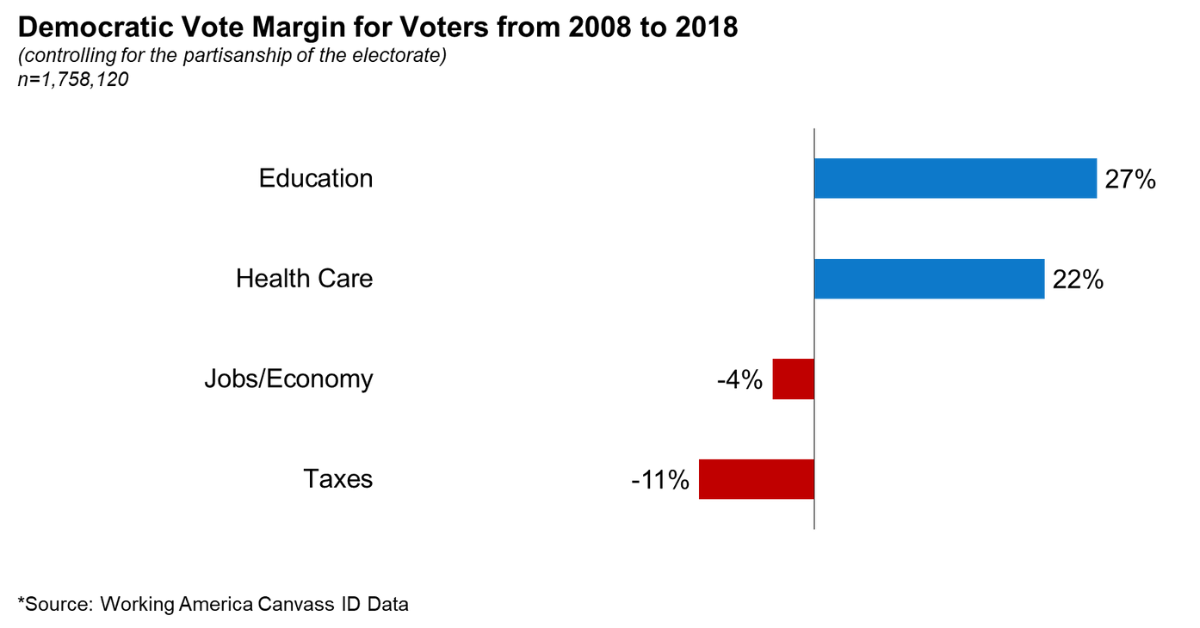

But when we organize voters to support a working people’s agenda of higher wages and affordable health care, those voters see the election outcomes differently — they shift both their issue priorities and their vote. Let’s take a look at who the undecided voters in the Arizona race are, what’s on their minds, and how we can shift them into our column. STATE OF THE RACE IN ARIZONA“I’m concerned about women’s rights, but that isn’t the only thing anyone should be voting on — look at the cost of rent and our failing schools.”– Maria, F, mid 30s, Phoenix, AZ By now, you probably recognize our “donuts,” comparing 2022 canvass data on candidate support to prior years. (If not, check out the MI and PA reports.) The Democratic candidates, Hobbs for governor and Mark Kelly for Senate, have close races in a more partisan electorate than 2018. Kelly is favored to win by pundits (83% probability) and in our data, he is running ahead of Kirsten Sinema’s 2018 mark. Hobbs is given a 51% win probability by forecasters, and in our data, lags Sinema’s mark by 3.6 points. (More detailed breakdowns are here .) Similar to other states, the composition of the Arizona electorate (who votes), shifts between elections . Helpfully, the Arizona electorate has steadily become more Democratic over the last decade.Campaigners trying to either increase the turnout of their base or swing the undecided voters can look at what issues are driving voter behavior. Let’s take a look at the Arizona gubernatorial contest — specifically the undecided cohort — to understand what they care about and which way they are leaning.
WHAT’S DRIVING ARIZONA VOTERS
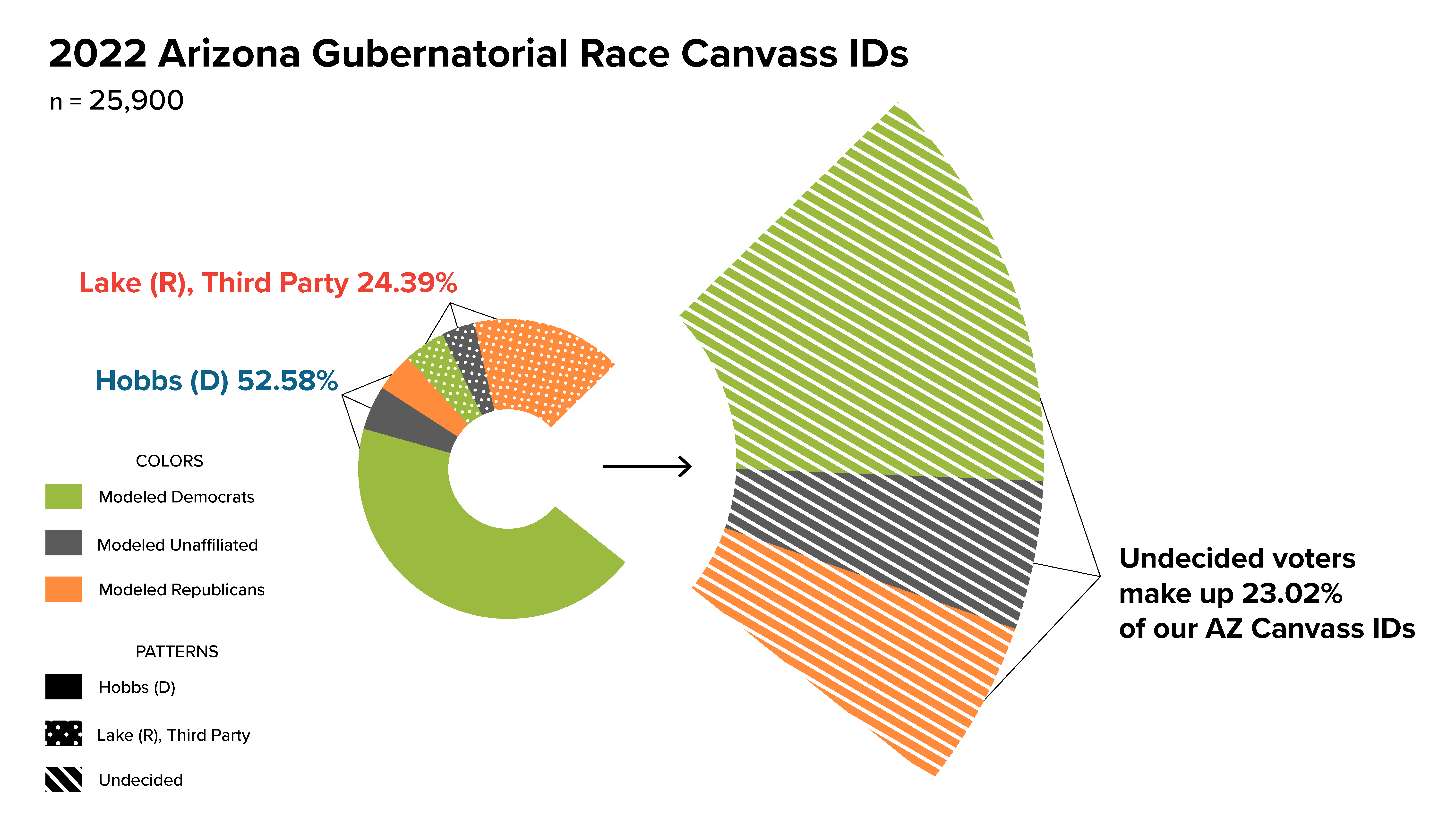

A few keys to understanding the data below:An undecided voter’s partisan identity — likely Democrat (the green slice), likely Republican (orange) or unaffiliated (gray) — is still the strongest predictor of their vote. Based just on these voter models, Hobbs should win these voters 2 to 1, if partisans vote their team and unaffiliated voters are split proportionally.We then use a voter’s most important issue to predict how likely they are to stick with their party’s candidate or defect. For example, among voters with a similar Republican tilt, Democratic candidates perform an average of 22 points better if the voter’s most important issue is health care. We can then group the concerns of these undecided voters by which party typically wins on the issue.
The dominant issues in this race are health care, education (both historically a Democrat advantage) and jobs and the economy (a Republican advantage). Comparing the partisan breakdown of undecided voters to how they break down by their issue priorities lets us see which way these undecideds are likely to break. In this case, it’s a problematic sign for Democrat Hobbs — there are many more voters concerned about Republican issues than there are likely Republicans, indicating that her opponent may pick up more than the expected share of these voters, based on their partisan make up.
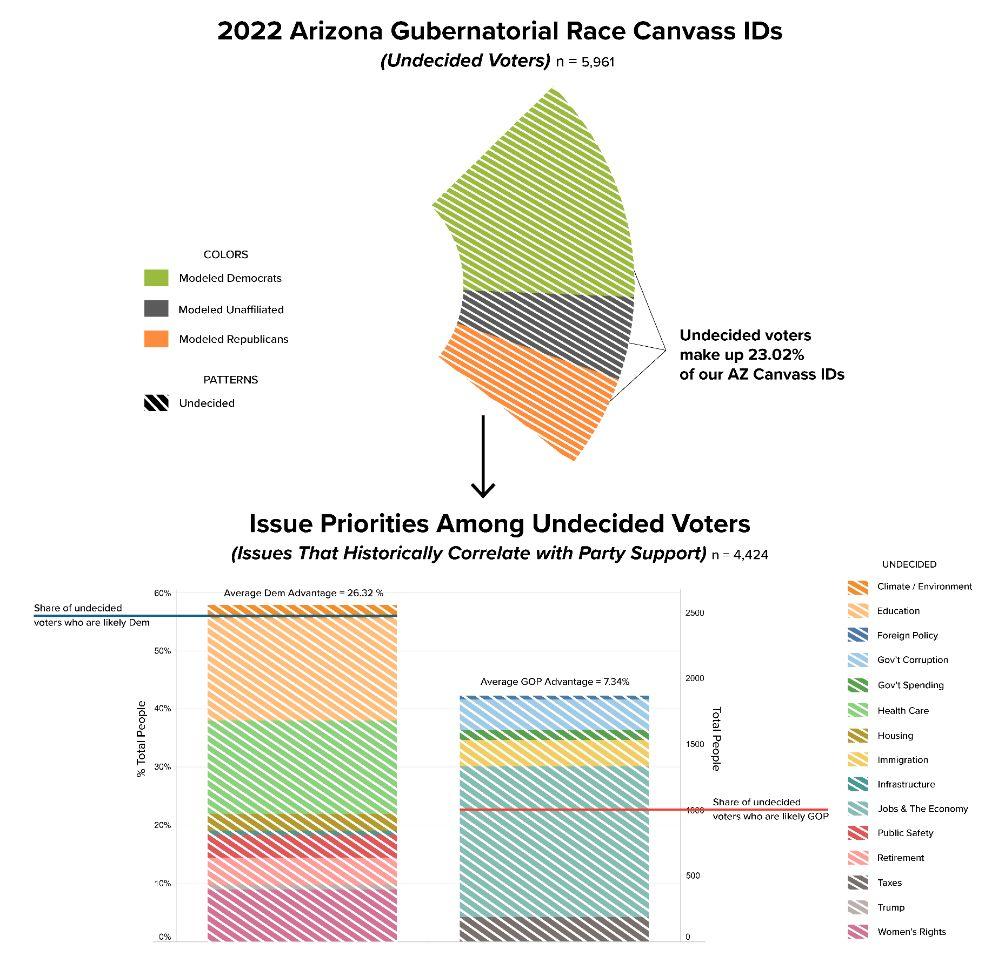

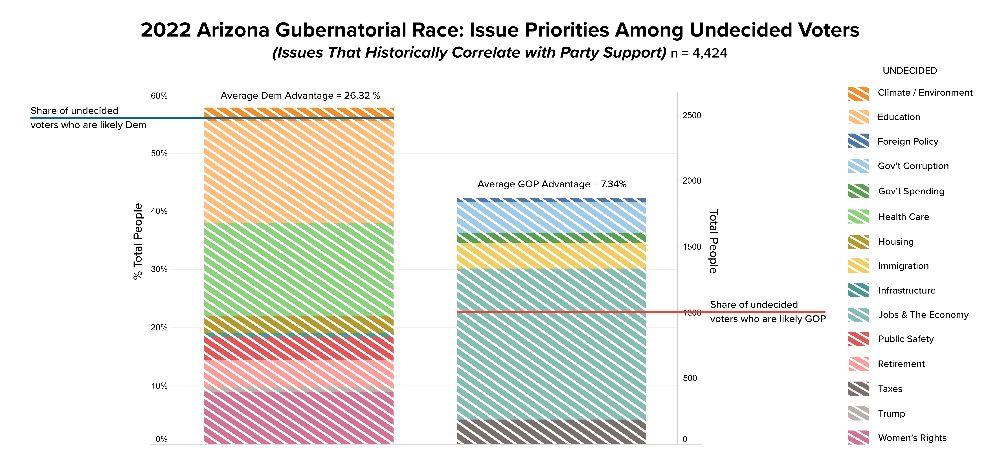

Overall, among voters focused on the issues that favor Democrats, the Democratic candidate will typically win by a margin of 26.3 points once we control for partisanship. Among voters focused on Republican-favored issues, Republican candidates typically win by 7.3 points. In order to close the gap in the election, Hobbs must capture the voters who care about issues where she has an advantage, and make inroads with those whoe care about issues that advantage Republicans. Yvette, a 30-year-old unaffiliated mother from Chandler illustrates how to connect with voters concerned about education. “I’m not giving them much time before I pull my child out of school and begin homeschooling,” she told us. “I want someone educated to teach my child, not a college student that may never finish.” She was swayed to support Hobbs when our canvasser told her about Hobbs’ commitment to invest more in education. Arizona’s $8,700-per-pupil investment ranks close to last in the nation, ahead only of Idaho and Utah.Many of the same voters are undecided in the state’s Senate race. Kelly does not need to win as many of these voters as Hobbs does, but can appeal on the same set of issues.
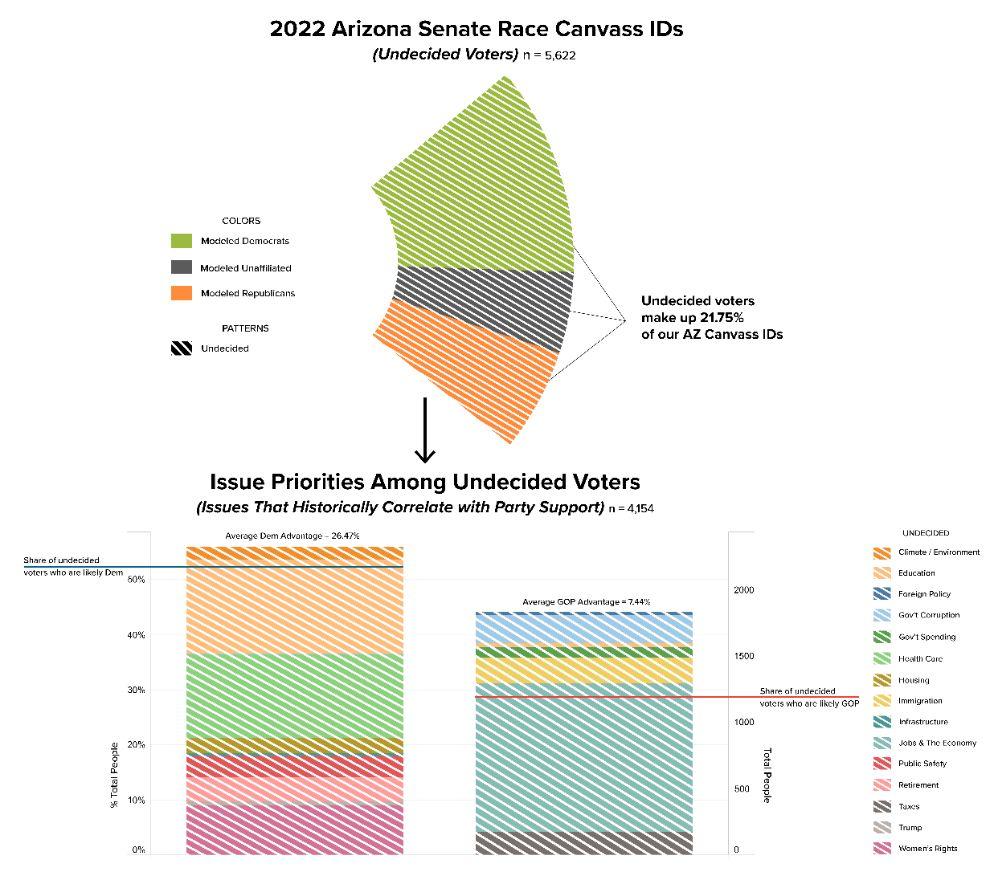

Canvassers report that simply connecting the dots for voters is the key. At times, that means we have to pivot to address voter fears and misinformation around issues favorable to Republicans, like jobs and the economy. They have found that one potent talking point in this race has been explaining that if Blake Masters had been the U.S. Senator instead of Mark Kelly, we would never have secured the Inflation Reduction Act’s investments in clean energy, which are creating solar installer jobs that start at $80,000 a year in Arizona.
Two additional important points of context:
To check out the issue preferences of undecided voters in other contests across the country, see the charts at the bottom of this update.
MOVING PEOPLE ON THE ISSUES INSTEAD OF THE CANDIDATES Working America’s army of professional and volunteer organizers communicate with millions of working-class people every year — at their doors, in their mailboxes and online — helping them navigate the system and build support for a just economy. In our next update, we will share how the effort to get more people focused on concerns like affordable health care and quality education — instead of topics like crime and illegal immigration — results in people voting their needs instead of their fears, changing the course of elections. As always, thank you for your support of Working America.
See you on the doors,
Matt Morrison
We use cookies and other tracking technologies on our website. Examples of uses are to enable to improve your browsing experience on our website and show you content that is relevant to you.